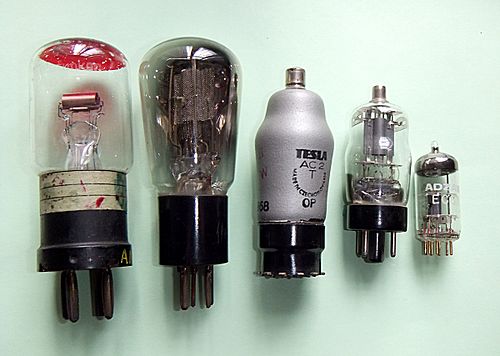Triodenoun
A thermionic valve containing an anode, a cathode, and a control grid; small changes to the charge on the grid control the flow from cathode to anode, which makes amplification possible.
Triodenoun
a thermionic vacuum tube having three electrodes; fluctuations of the charge on the grid control the flow from cathode to anode which making amplification possible
Triode
A triode is an electronic amplifying vacuum tube (or valve in British English) consisting of three electrodes inside an evacuated glass envelope: a heated filament or cathode, a grid, and a plate (anode). Developed from Lee De Forest's 1906 Audion, a partial vacuum tube that added a grid electrode to the thermionic diode (Fleming valve), the triode was the first practical electronic amplifier and the ancestor of other types of vacuum tubes such as the tetrode and pentode.
Tetrodenoun
A thermionic valve similar to a triode with the addition of a screen grid to improve the thermionic emission.
Tetrodenoun
A dynatron.
Tetrodenoun
A dual-gate MOSFET.
Tetrodenoun
a thermionic tube having four electrodes
Tetrode
A tetrode is a vacuum tube (called valve in British English) having four active electrodes. The four electrodes in order from the centre are: a thermionic cathode, first and second grids and a plate (called anode in British English).

















